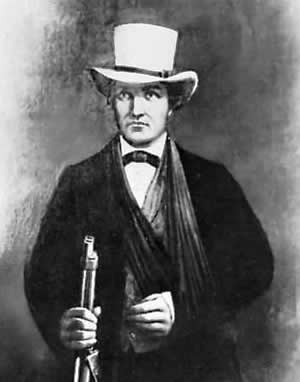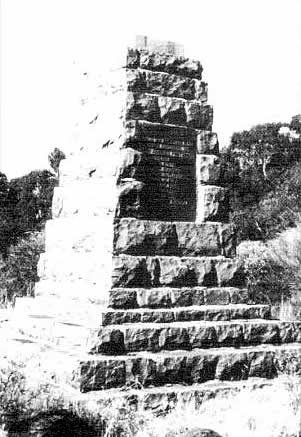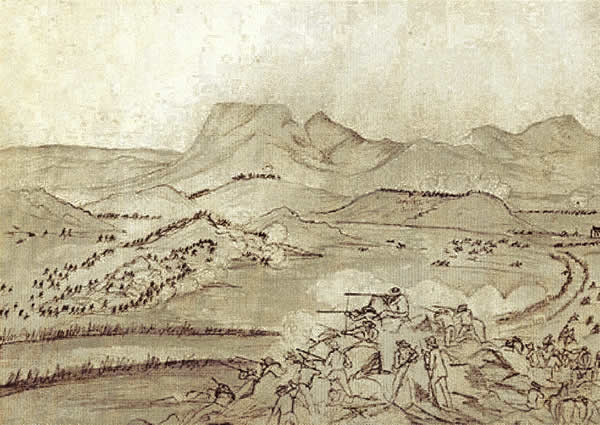 Sir Harry Smith annexed the country between the Orange River and the Vaal on 3rd February, 1848. The move was opposed by the Boer farmers under Andries Pretorius who began to advance southwards through the Orange River Sovereignty and to evict the British magistrates who had been sent to their posts without any military support.
Sir Harry Smith annexed the country between the Orange River and the Vaal on 3rd February, 1848. The move was opposed by the Boer farmers under Andries Pretorius who began to advance southwards through the Orange River Sovereignty and to evict the British magistrates who had been sent to their posts without any military support.
Smith's express message, ordering Colonel George Buller to mobilize a force to proceed to the Orange River, reached King William's Town on 28th July. Buller marched on 4th August, accompanied by, among others, companies of the Rifle Brigade, each consisting of about eighty men. On the 21st they reached Colesberg where other units were also concentrating and Sir Harry soon arrived from Cape Town to take over command. News came in that Pretorius had reached a point only ten miles from the Orange River and had sent patrols down to watch the banks and to prevent, or at any rate report, any British attempts to cross.
The Boers were thought to have a strength of about twelve hundred as against the eight hundred British. Though they were not professional soldiers they were a formidable adversary, for they were excellent shots, they had more field guns than the British and the fact that every man had his horse gave them great mobility.
 Smith moved forward as soon as possible. Under him were the two Rifle Brigade companies and two each from the 45th and the 91st Regiments, a detachment of Cape Mounted Rifles (not to be confused with that famous regiment, The Cape Mounted Riflemen, which was formed from the F.A.M.P. which was formed in 1855), three field guns under the command of Lt. Dynely of the Royal Artillery and a small unit of Sappers and Miners. The Medical Department consisted of Mr. (later Sir John) Hall, Dr. Atkinson and a Mr. Power. Supplies were brought forward by waggon.
Smith moved forward as soon as possible. Under him were the two Rifle Brigade companies and two each from the 45th and the 91st Regiments, a detachment of Cape Mounted Rifles (not to be confused with that famous regiment, The Cape Mounted Riflemen, which was formed from the F.A.M.P. which was formed in 1855), three field guns under the command of Lt. Dynely of the Royal Artillery and a small unit of Sappers and Miners. The Medical Department consisted of Mr. (later Sir John) Hall, Dr. Atkinson and a Mr. Power. Supplies were brought forward by waggon.
The crossing of the Orange was not opposed, Pretorius gradually withdrawing his force to the neighbourhood of the farm Boomplaats which lay to the north-west, about seventy-five miles short of the capital town of Bloemfontein.
The British halted at the deserted farm of Touwfontein for their morning meal on 29th August, 1848, and learnt that Pretorius was holding a range of low hills about twelve miles away and on the right of the track which led to Boomplaats. Smith reached this objective early in the afternoon and at once ordered an attack, with the Cape Mounted Rifles on the left, the 45th in the centre and the Rifle Brigade on the right, the 91st remaining in reserve. The advance was made in extended order. The 45th were held up by heavy fire and only carried the Boer positions when the 9lst had come up in support. The Cape Mounted Rifles beat off a Boer flanking party which had tried to come round them to attack the waggons in the rear and carried their objectives, as did the Rifle Brigade and the fight was over, Pretorius withdrawing over the Vaal and making no further effort to conquer the Sovereignty.

(information derived from The South African Military History Society, Vol 1 No 4 - June 1969, by R.R. Langham-Carter http://samilitaryhistory.org/vol014rl.html)